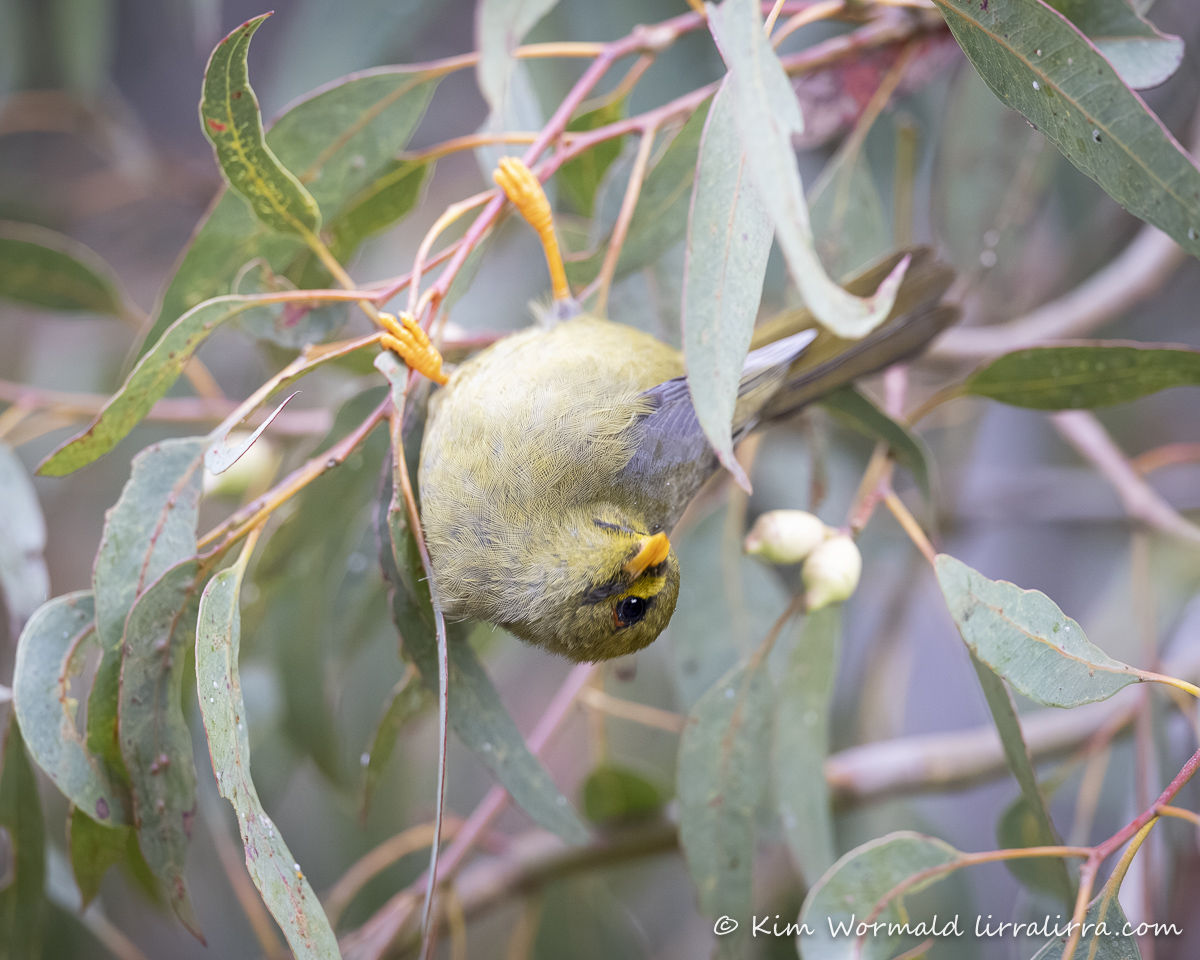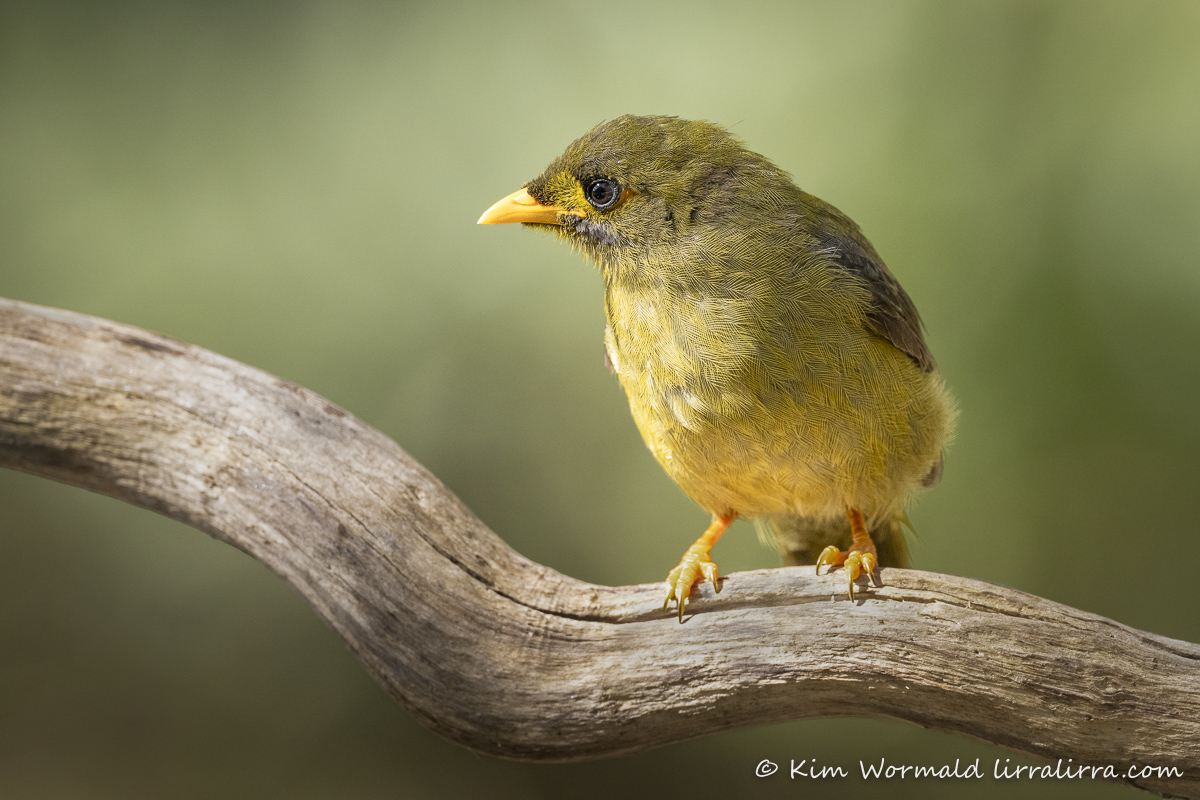What a huge surprise it was to hear the repetitive, loud ‘ding’ of Bell Miners close to the house, usually they stay on the far side of the bush. And then, as in the third photograph, they came even closer.

1/1000, f/4.0, ISO 6400, handheld
Canon R5, Canon RF 600 f/4.0 L IS USM
The first two photographs were taken in quite awful light for photography, which explains the camera settings – wide open aperture, extremely high ISO and slower than ideal shutter speed when photographing foraging birds. I took these shots because the Bell Miners weren’t foraging high in the canopy as usual. Instead of being eight or more metres up they were not far above head height.
If you look at the leaves, especially the one in the top right corner, you’ll see their favourite food source clustered on the underside of the leaf. The little tent-shaped structures are formed by insects called psyllids: the tent structures themselves are called lerps. Lerps are made from a sugary secretion that the psyllids exude to protect themselves as they suck nutrients from the leaves.
Bell Miners have learned to harvest lerps while leaving the psyllids alive to create another lerp. This strategy can result in Bell Miner Associated Dieback which causes trees to die from the top down.

1/1000, f/4.0, ISO 6400, handheld
Canon R5, Canon RF 600 f/4.0 L IS USM
Bell Miners are acrobatic feeders, twisting and turning to examine the underside of leaves. They are generally heard before they are seen as their repetitive call is loud and incessant. It can be difficult to spot them even when you know there are several in a tree as their olive-green feathers blend perfectly with the eucalyptus foliage. They have bright yellow bills and legs, and a reddish patch of bare skin just behind each eye.

1/1000, f/5.6, ISO 1600
Canon R5, Canon RF 600 f/4.0 L IS USM
I’m not sure how I feel about having Bell Miners so near to the house. On one hand it’s pretty amazing to see them so close, including the one above that visited the birdbaths with a few friends and family members. On the other hand they are an aggressive species that is known to drive away other small birds. I’m hopeful that they are part of the group I’m aware of, from the other side of the creek, and that the group will stay relatively small and not disturb my wonderful array of small bush birds or cause problems for the eucalypts.
Happy birding, Kim
~ Facebook page Kim Wormald – lirralirra – 8.6K followers
~ Facebook group Ethical Bird Photography
~ Browse prints and gifts Lirralirra Shop or contact me directly

Great shots this week, Kim – I especially love the middle photo of the miner twisting upside down to check the leaves for food. I do love the very Aussie sound of the Bell bird, but we never get to hear it in the burbs, only when I take a stroll in the Dandenongs, and gaze up at the tall eucalypts – which is once in a blue moon. Miner birds seem to have a very aggressive side, so I agree with you, and understand why you are ambivalent about them. Noisy Miners are thriving in the burbs of Melbourne, and I really cannot stand their bullying of smaller birds, who are driven out. There’s so much beauty in the world of birds, but there’s no denying, Nature certainly has her dark side!
Thanks Deirdre! I like how acrobatic they are when feeding and totally agree about the side of nature which makes things difficult sometimes for other creatures. I think the way we’ve upset the balance in so many places is a huge factor. The vast amount of grevilleas and similar nectar-bearing options that are planted in suburban gardens favour Noisy Miners, which is a shame as I think many people plant them because they think they’ll be bird-attracting… rather than NM attracting thereby limiting other species.